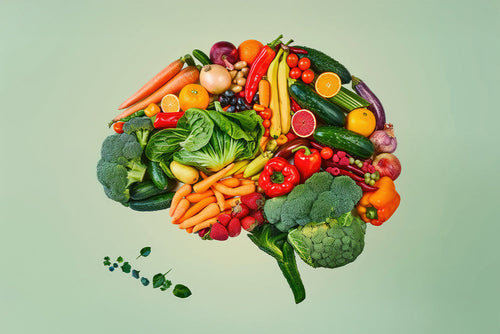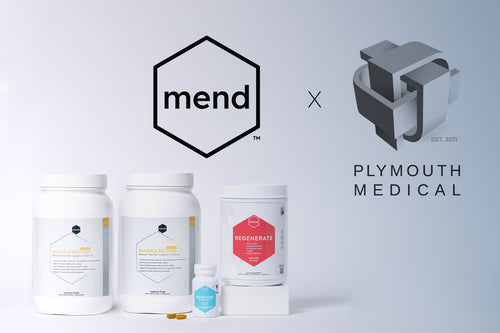Inside of every one of us, there is a constant cycle of destruction and construction. Old cells break down and are replaced with new ones. We see this happen automatically in our skin as blemishes, cuts and scrapes vanish over the course of days or weeks. The damaged cells are replaced with new ones. If we zoomed in within each cell, we would see the same process on a smaller scale. Biomolecules like proteins break down, and new proteins replace the old ones.
However, this same process isn’t as automatic in our muscles. Exercise, nutrition and several other factors greatly affect the cycle of muscle cell and protein turnover. As an organ, muscle is either increasing in mass (hypertrophy) or losing mass (atrophy)[1].
Why Does Muscle Atrophy Occur?

Muscle atrophy can occur for various reasons, but it always has the same result—a smaller, weaker muscle. In fact, each muscle cell will shrink individually making for a collectively weaker muscle. Here are some of the reasons muscle atrophy can occur[2]:
- Lack of exercise.
- Various illnesses: cancer, Acquired immunodeficiency syndrome, Chronic Obstructive Pulmonary Disease, arthritis, Amyotrophic Lateral Sclerosis, and many more.
- Malnutrition
- Surgery
- Aging
As you can see, muscle atrophy is often the result of stress on the human body. This is because the body treats skeletal muscle as expendable during hardship. For example, in periods of starvation or malnutrition, muscle protein will be broken down to provide energy and nutrients for more essential organs. Often, surgery can create similar demands on our muscles. The body prioritizes healing which is nutritionally demanding. In order to obtain the energy and nutrients to build new tissue, muscle protein will be metabolized[3].
Muscle atrophy associated with aging can differ from other forms of atrophy. Often referred to as sarcopenia, this condition involves both loss of mass and quality of muscle tissue. This type of muscle loss doesn’t just involve cells shrinking in size, but also in number. With sarcopenia, connective tissue and fat often replace muscle cells and further inhibit the ability of muscles to contract[4].
Muscle Atrophy and Our Overall Health

Losing muscle isn’t just a problem for those of us wanting to run faster and move heavier weights. Preventing muscle atrophy following surgery is one of the major concerns of occupational and physical therapy. Muscle atrophy can slow recovery from surgery and lead to longer hospital stays, lower quality of life, and increased chances of readmission to the hospital[5].
Muscles are critical in maintaining a healthy metabolism. Since muscles require so much energy, having healthy muscle mass prevents excess calories from going into fat storage. Consequently, muscle atrophy is also associated with an increased risk of both obesity and type II diabetes[6].
Ways to Prevent Muscle Atrophy
Preventing muscle atrophy requires both exercise and proper nutrition. Exercise while ignoring nutrition is counterproductive. As we exercise, our bodies burn calories and consume nutrients at a higher rate.
If we don’t supplement our diets to reflect this increased demand, it will put our bodies in a state of starvation. Again, when our bodies are on nutrients, they will metabolize muscle protein for sustenance, leading to muscle atrophy. As we exercise, we need more calories and more nutrients like protein, vitamins and minerals.
In the case of sarcopenia associated with aging, another nutrient appears to be critical to fighting muscle loss—HMB. This derivative of the amino acid leucine has been shown to fight muscle loss due to aging in study after study[7][4]. It is for that reason that MEND Regenerate contains HMB – to promote muscle growth and prevent muscle breakdown.
In Conclusion
Muscle atrophy is a condition that we all face, and increasingly so as we age. By ensuring proper exercise and nutrition, we can help our bodies maintain healthy muscle mass. Adding MEND Regenerate to your daily diet, ensures that your body receives 33 nutrients for peak health. The optimized formula makes for maximum absorption of protein and amino acids to fuel muscle health, muscle growth, and performance, and can therefore aid with combating muscle atrophy.
- Signaling in Muscle Atrophy and Hypertrophy
- What Causes Muscle Wasting?
- Energy metabolism in sepsis and injury
- Muscle wasting and aging: Experimental models, fatty infiltrations, and prevention.
- One Week of Hospitalization Following Elective Hip Surgery Induces Substantial Muscle Atrophy in Older Patients
- Physical Activity/Exercise and Diabetes
- Nutritional Supplements in Support of Resistance Exercise to Counter Age-Related Sarcopenia



